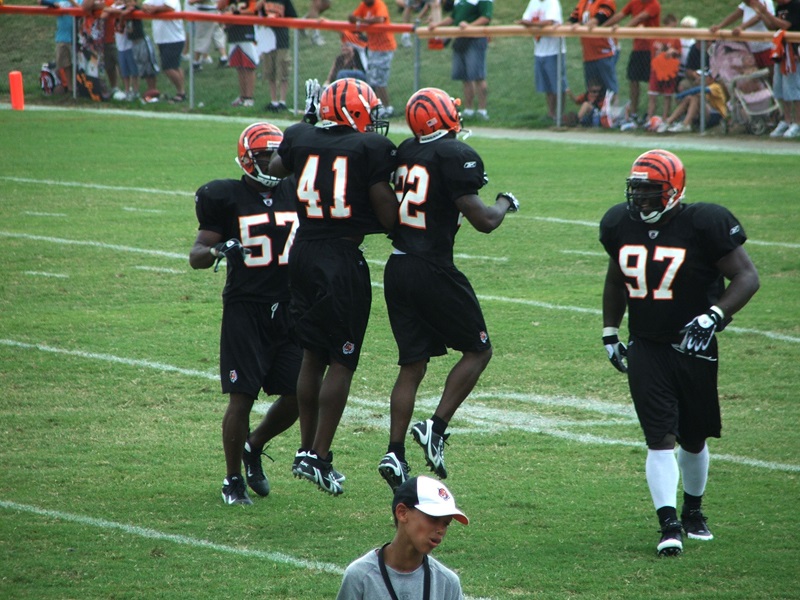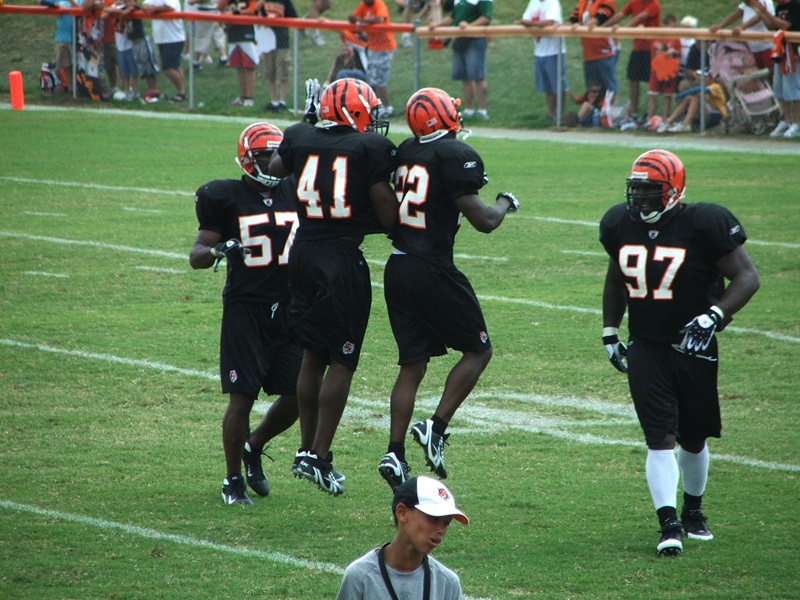
“Have you seen Paul Richardson yet?” You’re about to see why I’ve been asked this question by a follower multiple times since August.
Last week, I finally watched two games of the Colorado receiver and I get it, Richardson has flash to his game. You’ll see what I mean if you’ve never heard of the junior who has declared for the 2014 NFL Draft. I’m sold on his ability, but there is a lingering question I’ll have until he proves otherwise: Can Richardson get bigger?
Listed at 6-1, 170 lbs., Richardson doesn’t appear to have the frame to withstand punishment at the position. Anecdotal precedent brings to mind a former second-round pick of the Philadelphia Eagles in the 2000 NFL Draft who was known for his excellent hands and routes, but at 6-3, 180 lbs., Todd Pinkston was rail thin for an NFL receiver. And if I recall correctly, Pinkston wasn’t 180 until 2-3 years into his career.
Pinkston gave teammates and fans a hint of his skills throughout his five-year career, including a 60-catch, 798-yard, 7-score season in 2002. However, the Eagles’ receiver also had some well-publicized moments of alligator arms. It was an issue I don’t recall Pinkston having until he became an NFL veteran and I wouldn’t be surprised if it had to do with his skinny frame.
Adding weight is an obvious answer, but there are some individuals who have a difficult time adding it. I always wondered if Pinkston was one of them – he fit the body time. Richardson says he can get bigger, stronger, and faster when he enters the NFL. I hope he’s right, because he has the baseline skills and athleticism to develop into an NFL starter who can stretch defenses to its limit.
The Boiler Room is a series devoted to providing readers a glimpse of a prospect through a single highlight that encapsulates a great deal about a player’s skills. One play hardly ever tells the full story of a player, but if you watch enough of a prospect, you can get a feel for the plays that will do that player justice if you could only show one.
The Boiler Room is focused on prospects I expect to be drafted, and often before the fourth round. Richardson’s ability makes him a candidate to go this early, but the fact he’s a junior, missed much of his sophomore year, and others might also have concerns about his size, don’t make the early rounds a guarantee.
Richardson’s Play: Speed, Quickness, Concentration, and Hand-Eye Coordination
The play I chose highlights the base skills that makes Richardson one of the better college receivers in the country. It’s a 1st-and-10 catch for 28 yards with 0:52 in the first quarter. Richardson is the outside receiver on the left side of a 30 personnel pistol set. The cornerback plays a yard off the line of scrimmage and is shaded slightly inside. Based on the position of the safety, who is closer to the defensive end in his alignment well inside the left hash, this is single coverage for Richardson.
[youtube=http://www.youtube.com/watch?v=ezRBYbkChgQ&start=131w=420&h=315]
Richardson’s release isn’t technically amazing, but it demonstrates a player with skills to build on. He takes two short steps off the line to the inside and then begins his burst outside. Richardson uses his inside arm to slip inside the defender’s body, gaining separation up the numbers and to the flat. By the time the Buffaloes receiver gets 13 yards down field, he has a full step on the defender. [Subsequent note: the defender is Ifo Ekpre-Olumu, one of the best cornerbacks in college football, and a personal favorite of mine]
Early separation will need to be a hallmark of Richardson’s game in the NFL even if he adds weight and gets stronger, because I’m skeptical he’ll gain more than 10-15 pounds of good weight. A player like Jordy Nelson or Anquan Boldin can bang with a corner while working down-field and win position late. It’s unlikely Richardson will ever be that kind of player. It means Richardson will need to demonstrate to a quarterback that he is a reliable route runner who can win the trust of his passer on plays that don’t appear wide-open early.
What’s most impressive about Richardson’s game is his skill as a pass catcher. The receiver is in full stride as the ball arrives, but the corner has Richardson’s inside arm pinned to Richardson’s side. Not does this move up the difficulty of the target, but it can distract a receiver from an attempt to make a play.
Not Richardson. The receiver extends for the ball with his outside arm, making a diving catch. He also manages to secure the ball with one arm before he lands and doesn’t lose security after rebounding off the turf.
It’s a beautiful play. It’s also what this play isn’t that concerns me. It isn’t a route into the teeth of the defense where there will be an impending hit from a safety or linebacker. Those situations will be the bellwether of Richardson’s role in the NFL: a contributor as a deep threat lacking that final dimension to thrive as an every-down starter or a primary threat capable of making plays anywhere on the field.
There are plenty of good receivers over the past 20 years who weighed less than 180 lbs. in the NFL, but most of them were in the height range of 5-8 to 5-10 and their frames were more compact. At 6-1, 170 lbs., I hope Richardson is right about getting bigger and stronger – he’s too much fun to watch not to see him play every down.
For analysis of skill players in this year’s draft class, download the 2013 Rookie Scouting Portfolio.The 2014 RSP will available April 1 and if you pre-order before February 10, you get a 10 percent discount. Better yet, if you’re a fantasy owner the 56-page Post-Draft Add-on comes with the 2012 – 2014 RSPs at no additional charge and available for download within a week after the NFL Draft. Best, yet, 10 percent of every sale is donated to Darkness to Light to combat sexual abuse. You can purchase past editions of the Rookie Scouting Portfolio for just $9.95 apiece.








